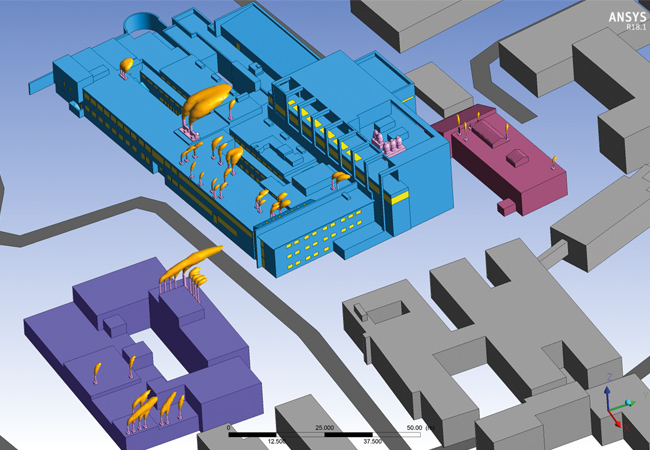
The Covid-19 pandemic caused disruption to live events, with the sports and entertainment industries being particularly hard hit during the lockdowns.
To help the UK safely lift restrictions on large gatherings, the government initiated the Events Research Programme (ERP). One key area of focus was identifying risks associated with event venues, particularly focusing on ventilation in high-traffic areas, to better understand how indoor air quality (IAQ) might influence the spread of airborne viruses such as SARS-CoV-2.
The results of the study were presented at the CIBSE Technical Symposium in Cardiff earlier this year.
A significant portion focused on monitoring air quality in food and drink concession stands because they often experience transient, yet high occupancy. CO2 monitoring was used to assess ventilation performance, as elevated CO2 levels serve as a proxy for poor ventilation and potentially higher concentrations of exhaled breath.
The study used non-dispersive infrared CO2 sensors capable of measuring concentrations up to 5,000ppm with an accuracy of 30ppm. Loggers were installed at breathing height (1.6m to 2.3m) to provide high-resolution data.
Ventilation was monitored at 10 venues in England, covering 179 spaces over 90 events. These venues included a range of indoor spaces, from seating areas and concourses to toilets, restaurants, private boxes, and food and drink concession stands.
The research team recorded CO2, temperature and relative humidity levels, noting times of high occupancy and verifying this data with CCTV footage. The research was observational, with the team present during most events but refraining from intervening in venue management.
CIBSE Guide A recommends a provision of 10 l/s per person of outdoor air in spaces like concession stands, but post-occupancy evaluations are rare. To assess whether ventilation strategies are adequate during peak occupancy, CO2 levels were closely monitored in concession stands at Royal Ascot, Wembley Stadium, and the O2 Arena.
At Royal Ascot, a single bar was monitored over five events with an 18% occupancy (12,600 attendees). Similarly, 16 bars and kiosks were monitored at Wembley Stadium during Euro 2020 football matches, with occupancies ranging from 3% to full capacity (90,000). Lastly, four bars were observed at the O2 Arena during a music awards ceremony with 18% occupancy (3,532).
Air-quality classification bands were developed to rapidly assess ventilation effectiveness and the associated risk of airborne virus transmission. The bands, ranging from A to G, classified spaces based on average and maximum CO2 concentrations, with ‘A’ indicating good ventilation and ‘F’ or ‘G’ suggesting ventilation improvements were needed.
Results showed that 86% of kiosks had good ventilation when considering the average CO2 levels at the event, which included high and low-occupancy periods. However, at maximum CO2 levels during peak occupancy, only 45% of kiosks maintained good ventilation, while 12% were in F and G bands, indicating ventilation could not cope.
One outcome was the influence of event management and structure on ventilation performance. For example, the O2 Arena and Royal Ascot had more frequent breaks, which allowed for a more even distribution of people in concession stands, resulting in relatively flat CO2 levels. However, Wembley, where fans are not permitted to take drinks into the seating areas, saw significant spikes in CO2 before the match and during half-time, reflecting higher concentrations of people.
Here, the research also showed that ventilation strategies differed across levels. Level 1 and 2 concourses, which are naturally ventilated, maintained CO2 concentrations below 1,500ppm even at full capacity. But level 5, with natural and mechanical ventilation, experienced higher concentrations at occupancies above 72%, suggesting ventilation was insufficient for peak demand.
This has important implications for event management and building design. Ensuring sufficient ventilation in high-occupancy areas is critical. Organisers and venue designers should consider the layout and structure of events when planning ventilation strategies. It’s vital that solutions can adapt to occupancy levels and event structures.
About the author
Filipa Adzic, is a research associate in fluid mechanics at UCL

